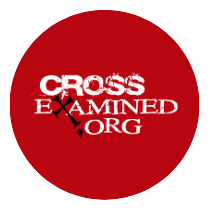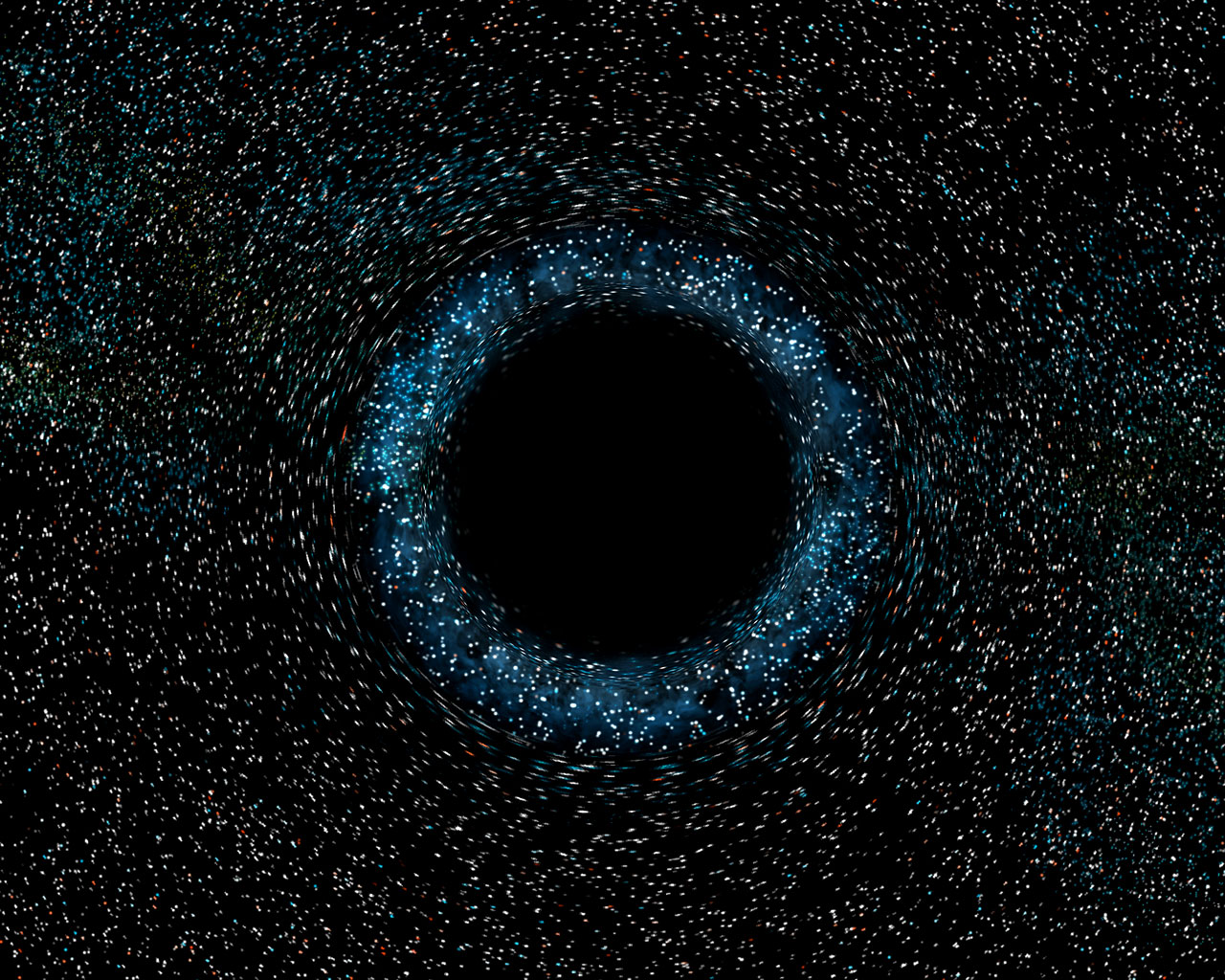Fine-Tuning of Initial Conditions to Support Life
This is the sixth blog in my series on fine-tuning. Here are the previous blogs if you missed them:
Intro/Philosophical Background
If You Don’t Want God, You Better Have a Multiverse!
How Does Fine-Tuning Provide Evidence for God?
Objections
Mistaken Objections that Seek to Trivialize Fine-Tuning
Important Objections in the Fine-Tuning Debate
We’re finally ready to start exploring the fine-tuning data itself. A logical starting point is the initial conditions of our universe – are those which permit life rare among possibilities?
1) Energy-Density is Finely-Tuned
The amount of matter (or more precisely energy density) in our universe at the Big Bang turns out to be finely-tuned to about 1 part in 1055. In other words, to get a life-permitting universe the amount of mass would have to be set to a precision of 55 decimal places. This fine-tuning arises because of the sensitivity to the initial conditions of the universe – the life-permitting density now is certainly much more flexible! If the initial energy density would have been slightly larger, gravity would have quickly slowed the expansion and then caused the universe to collapse too quickly for life to form. Conversely if the density were a tad smaller, the universe would have expanded too quickly for galaxies, stars, or planets to form. I argued in my previous blog that it’s implausible to expect life to originate without a long-lived, stable energy source such as a star. Thus, life would not be possible unless the density were just right – if you added or subtracted even just your own mass[1] to that of the universe this would have been catastrophic!
There is, however, a potential dynamical solution to this problem based on a rapid early expansion of the universe known as cosmic inflation. In this blog, I’ll be relying primarily on the most comprehensive review article on fine-tuning in the peer-reviewed literature – this one by Luke Barnes. I’ve referenced it previously and I’m hoping if I reference it enough I’ll get tech-savvy readers to check it out! It may be too technical for some readers and my blog can be viewed as just an attempt at explaining some highlights to non-physicists and tying it into my metaphysical hypothesis that God is the best explanation of the fine-tuning. So let’s look at what Luke Barnes has to say about inflation as a solution to the energy density problem. He points out 6 aspects of inflation that would have to be properly setup, some of which turn out to require fine-tuning. One significant aspect is that the inflation must last for the proper amount of time – inflation is posited to have been an extremely brief but hyper-fast expansion of the early universe. If inflation had lasted a fraction of a nanosecond longer, the entire universe would have been merely a thin hydrogen soup, unsuitable for life. Barnes cites an article by Max Tegmark of MIT that indicates that in a best case scenario about 1 in 1000 inflationary universes would avoid lasting too long. The biggest issue though seems to be that for inflation to start, it needs a very special/rare state of an extremely smooth energy density. Several articles make this point – consider Sean Carroll’s article:
“It is therefore a necessary (although not sufficient) condition for inflation to occur that perturbations be small at early times. . . . the fraction of realistic cosmologies that are eligible for inflation is therefore … 10-66,000,000.”
Barnes also explains why, even if inflation solves this fine-tuning problem, one should not expect new physics discoveries to do away with other cases of fine-tuning: “Inflation thus represents a very special case… This is not true of the vast majority of fine-tuning cases. There is no known physical scale waiting in the life-permitting range of the quark masses, fundamental force strengths or the dimensionality of spacetime. There can be no inflation-like dynamical solution to these fine-tuning problems because dynamical processes are blind to the requirements of intelligent life. What if, unbeknownst to us, there was such a fundamental parameter? It would need to fall into the life-permitting range. As such, we would be solving a fine-tuning problem by creating at least one more. And we would also need to posit a physical process able to dynamically drive the value of the quantity in our universe toward the new physical parameter.”
2) Initial Conditions in a Very Low Entropy State
Even if inflation somehow could solve the energy density problem and scientists are mistaken that inflation requires its own fine-tuning, inflation doesn’t solve the problem with this next type of fine-tuning which relates to the universe’s initial entropy. What is entropy? Entropy represents the amount of disorder in a system. Thus, a high entropy state is highly disordered – think of a messy teenager’s room. Our universe began in an incredibly low entropy state. A more precision definition of entropy is that it represents the number of microscopic states that are macroscopically indistinguishable. An egg has higher entropy once broken because you’re “opening” up many more ways to arrange the molecules. There are more ways of arranging molecules that would still be deemed an omelet than there are ways to arrange the particles in an unbroken egg in where certain molecules are confined to subsets of the space in the egg – such as a membrane or the yolk. Entropy is thus closely associated with probability. If one is randomly arranging molecules, it’s much more likely to choose a high entropy state than a low entropy state. Randomly arranged molecules in an egg would much more likely look like an omelet that an unbroken egg.
Entropy can also be thought of as the amount of usable energy. Over time the usable energy decreases. This principle is known as the Second Law of Thermodynamics, which says that in a closed system the entropy on average increases until a state of equilibrium is reached. Thus, the Second Law predicts that our universe will eventually reach such a state of equilibrium or “heat death” in which nothing interesting happens. All life will die off long before such a state is reached. Life relies on usable energy from the environment.
It turns out that nearly all arrangements of particles in the early universe would have resulted in a lifeless universe of black holes. Tiny inconsistences in the particle arrangements would be acted on by gravity to grow in size. A positive feedback results since the clumps of particles have an even greater gravitational force on nearby particles. Penrose’s analysis shows that in the incredibly dense early universe, most arrangements of particles would have resulted basically in nothing but black holes. Life certainly can’t exist in such a universe because there would be no way to have self-replicating information systems. Possibly the brightest objects in the universe are quasars, which release radiation as bright as some galaxies due to matter falling into a supermassive black hole. The rotation rates near black holes and the extremely high-energy photons would disrupt information storage, a prerequisite for life[2].
Artist’s conception of a black hole. Credit: European Space Agency, NASA, and Felix Mirabel (the French Atomic Energy Commission & the Institute for Astronomy and Space Physics/Conicet of Argentina)
Oxford physicist Roger Penrose is the first scientist to quantify the fine-tuning necessary to have a low entropy universe to avoid such catastrophes. “In order to produce a universe resembling the one in which we live, the Creator would have to aim for an absurdly tiny volume of the phase space of possible universes, about 1/1010123 [3].” This number is incomprehensibly small – it represents 1 chance in 10 to the power of (10 to the power of 123). Writing this number in ordinal notational would require more zeroes than the number of subatomic particles in the observable universe, 10123 zeroes vs. about 1092 particles. Under the assumption of atheism, the particles in our universe would have been arranged randomly or at least not with respect to future implications for intelligent life. Nearly all such arrangements would not have been life-permitting so this fine-tuning evidence favors theism over atheism. We have a large but finite number of possible original states and rely on well-established statistical mechanics to assess the relevant probability.[4]
In a comment on one of in my earlier blogs, someone suggested that perhaps the universe is fine-tuned for black holes rather than life. The incredibly low entropy state of the initial conditions shows, however, that the exact opposite is true – fine-tuning was required to avoid excessive black holes! This fact about the initial conditions also calls into question Smolin’s proposed scenario that universes with differing physical constants might be birthed out of black holes. Smolin suggests the possibility of an almost Darwinian concept in which universes that produce more black holes therefore more baby universes than those which don’t. But if our universe requires statistically miraculous initial conditions to be life-permitting by avoiding excessive black holes, universes evolving to maximize black hole production would be unlikely to lead to life! (Even if the evolution of universes were possible)
Furthermore, the skeptic who thinks that black holes suggest a purposeless universe should consider that black holes can, in moderation and kept at distance, be helpful for life. While a universe comprised of mostly black holes would be life-prohibiting, having a large black hole at the center of a galaxy is actually quite helpful for life. Here is a Scientific American article that documents the benefits of Black Holes for life – it summarizes: “the matter-eating beast at the center of the Milky Way may actually account for Earth’s existence and habitability.”
Does inflation explain the low entropy of the early universe?
Here is how Sean Carroll answers this question: “Not by itself, no. To get inflation to start requires even lower-entropy initial conditions than those implied by the conventional Big Bang model. Inflation just makes the problem harder[5].” Penrose also has harsh words for inflation as an explanation of the low entropy state of the initial universe[6].
Barnes calls inflation a “cane toad solution” for the entropy fine-tuning. Cane toads were brought into Australia from Hawaii starting in 1935 to eat beetles threatening the sugarcane fields. With no natural predators in Australia this strategy was disastrous as these poisonous toads multiplied greatly and wreaked havoc on native species and the ecosystem in general. Thus, Barnes is saying that inflation makes this fine-tuning problem worse. None of this is to say that some version of inflationary theory isn’t true just that it doesn’t help this fine-tuning issue.
How well could a multiverse explain this evidence?
This is a key question to consider as we explore the fine-tuning evidence. If some features seem overly fine-tuned, this would be unexpected if our universe was simply a life-permitting universe randomly selected from a vast ensemble of other universes with other constants or initial conditions. A multiverse explanation for the fine-tuning of the low entropy fails miserably because this universe does seem to be finely-tuned much more than would be minimally necessary. As Penrose says: “We can get the solar system and all inhabitants for much less odds: 1 in 101060 .. These world ensemble hypotheses are worse than useless in explaining the anthropic fine-tuning of the universe.” In other words, Penrose argues that it would be more likely to just have the particles arranged in initial conditions such that you already have pre-formed intelligent life in a single solar system than to have such a large universe as ours in a low-entropy state that could eventually lead to intelligent life.
Even atheist Sean Carroll admits[7] that a multiverse explanation fails for this fine-tuning. First, he agrees with the widely-accepted principle I referenced above: “anthropically-selected parameters should be of the same order of magnitude as the largest value compatible with the existence of life.” He then explicitly agrees that the multiverse cannot by itself explain this particular fine-tuning and quotes Penrose’s numbers. “An example of fine‐tuning well beyond anthropic constraints is the initial state of the universe, often characterized in terms of its extremely low entropy… The entropy didn’t need to be nearly that low in order for life to come into existence. One way of thinking about this is to note that we certainly don’t need a hundred billion other galaxies in the universe in order for life to arise here on Earth; our single galaxy would have been fine, or for that matter a single solar system.” As an atheist he doesn’t view this as an insuperable problem, holding out hope that new physics could somehow explain this low entropy. Carroll indicates that he can’t think of any reason why God would fine-tune the universe more than is necessary, apparently not giving thought to the possibility that God might want to leave evidence that He setup the physics of the universe – evidence of the type that even an infinite multiverse cannot plausibly explain!
Is this evidence for God?
Even if this evidence points to design, why think that God is necessarily the designer?
If this is your perspective, please help remove the stigma on intelligent design so this type of evidence can be fairly evaluated. Also, note that this perspective affirms the claim of leading Intelligent Design advocates that design by itself does not necessarily prove God.
For this particular design evidence, however, I argue that we have reasons for thinking that only a supernatural being could setup these initial conditions in this way. Is it in principle physically possible for a being limited by the laws of physics to setup the initial conditions of our Big Bang? The Heisenberg Uncertainty principle limits our ability to even have knowledge of both position and momentum of particles beyond a certain scale – and it’s even more challenging to think about how so many particles might have their locations and velocities adjusted. The early universe would have been so small that the limits imposed by this physical principle would seem to prevent any physically-limited agent from making the necessary adjustments to the particles or even having knowledge to determine necessary adjustments. Moreover, even those who advocate a naturalistic cause to the Big Bang often admit that the Big Bang represents a spacetime boundary. Many theorists consider our universe to be a causally disconnected region of spacetime – which would make it impossible for a physically limited being residing in a different physical region from affecting anything in this new region of spacetime.
Thus, a supernatural designer seems more plausible than a natural designer. Also, if fine-tuning is required to bring about intelligent life, how did the first natural designers arise?
Does God Have to be Fine-tuned?
To me this seems like asking: “does an uncreated being depend on rare events or rare settings of physical parameters for His existence?” By definition God doesn’t rely on anything for his existence – this is the concept of a necessary being. If the concept of a necessary being seems implausible, I warn you that you might already believe premises that by the rules of logic would entail the existence of a necessary being. I invite you to explore that possibility in this online quiz.
[1] The universe is estimated to contain at least 10^80 atoms – here is one estimate of 10^53 kg: http://en.wikipedia.org/wiki/Observable_universe Anyone old enough to read this blog must weigh at least say 10 kg so this seems to be a safe estimate even after accounting for other forms of matter energy not included in the above mass.
[2] Refer to my previous blog for further justification: http://crossexamined.org/cant-even-define-life/
[3] Penrose, The Emperor’s New Mind, p. 343. He also makes the same argument in Road to Reality on p. 730.
[4] In addition, the entropy equation for a black hole, first developed by Bekenstein and Hawking, is involved in these computations. This equation is widely accepted by the physics community and I’ve read articles by those who believe in string theory and those who believe in loop quantum gravity arguing for their theories by pointing to how they can derive this same equation in their flavor of quantum gravity.
[5] Sean Carroll, http://preposterousuniverse.com/eternitytohere/faq.html
[6] Penrose says in Road to Reality, p. 755: “Indeed, it is fundamentally misconceived to explain why the universe is special in any particular respect by appealing to a thermalization process [such as inflation]. For, if the thermalization is actually doing anything (such as making temperatures in different regions more equal than they were before), then it represents a definite increasing of entropy. Thus, the universe would have had to be more special before the thermalization than after. This only serves to increase whatever difficulty we might have had previously in trying to come to terms with the initial extraordinarily special nature of the universe. . . . invoking arguments from thermalization, to address this particular problem [of the specialness of the universe], is worse than useless!” A couple of pages later Penrose also writes that “the point is that whether or not we actually have inflation, the physical possibility of an inflationary period is of no use whatever in attempts to ensure that evolution from a generic singularity will lead to a uniform (or spatially flat) universe.”
[7] Carroll, Does the Universe Need God? The Blackwell Companion to Science and Christianity. A copy is available online at http://preposterousuniverse.com/writings/dtung/.












Leave a Reply
Want to join the discussion?Feel free to contribute!